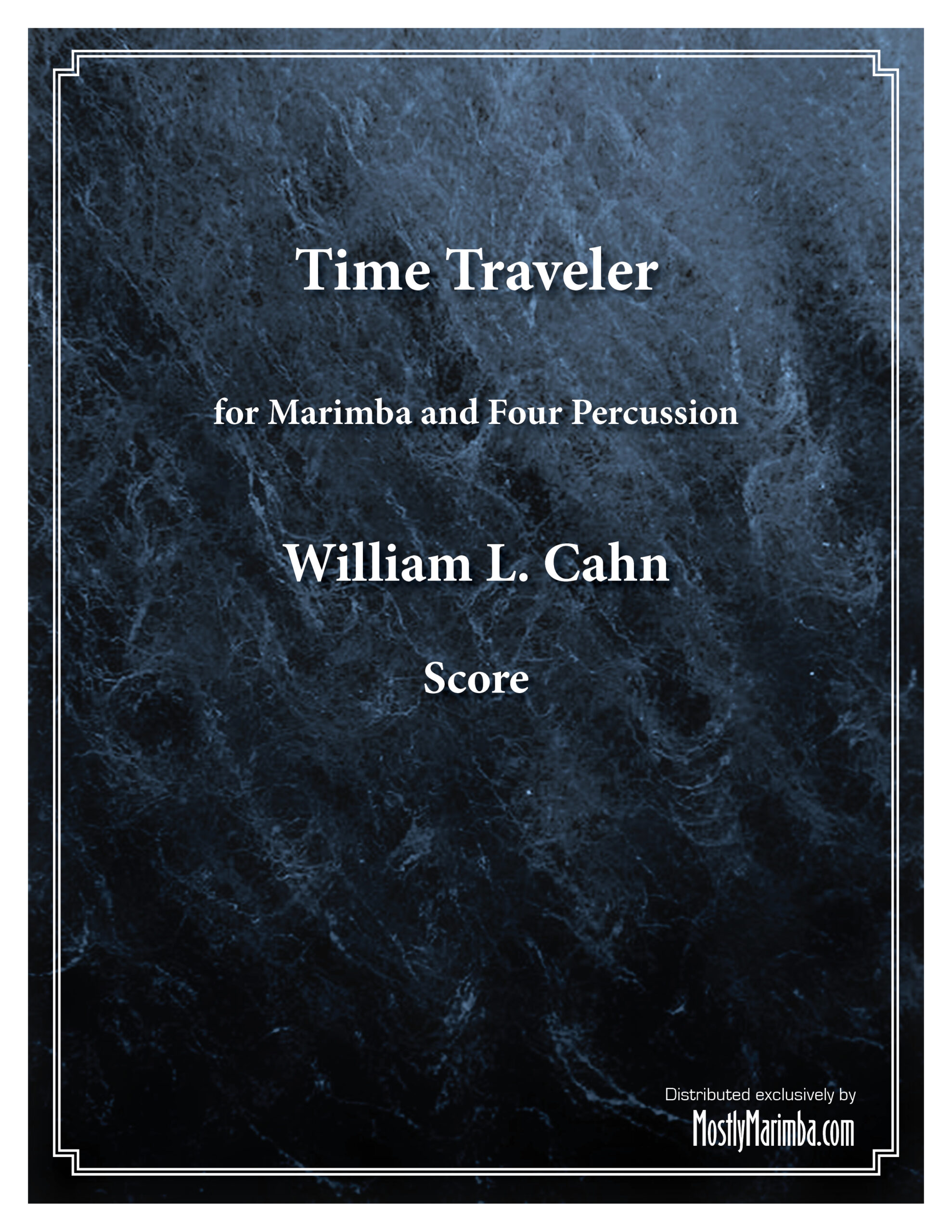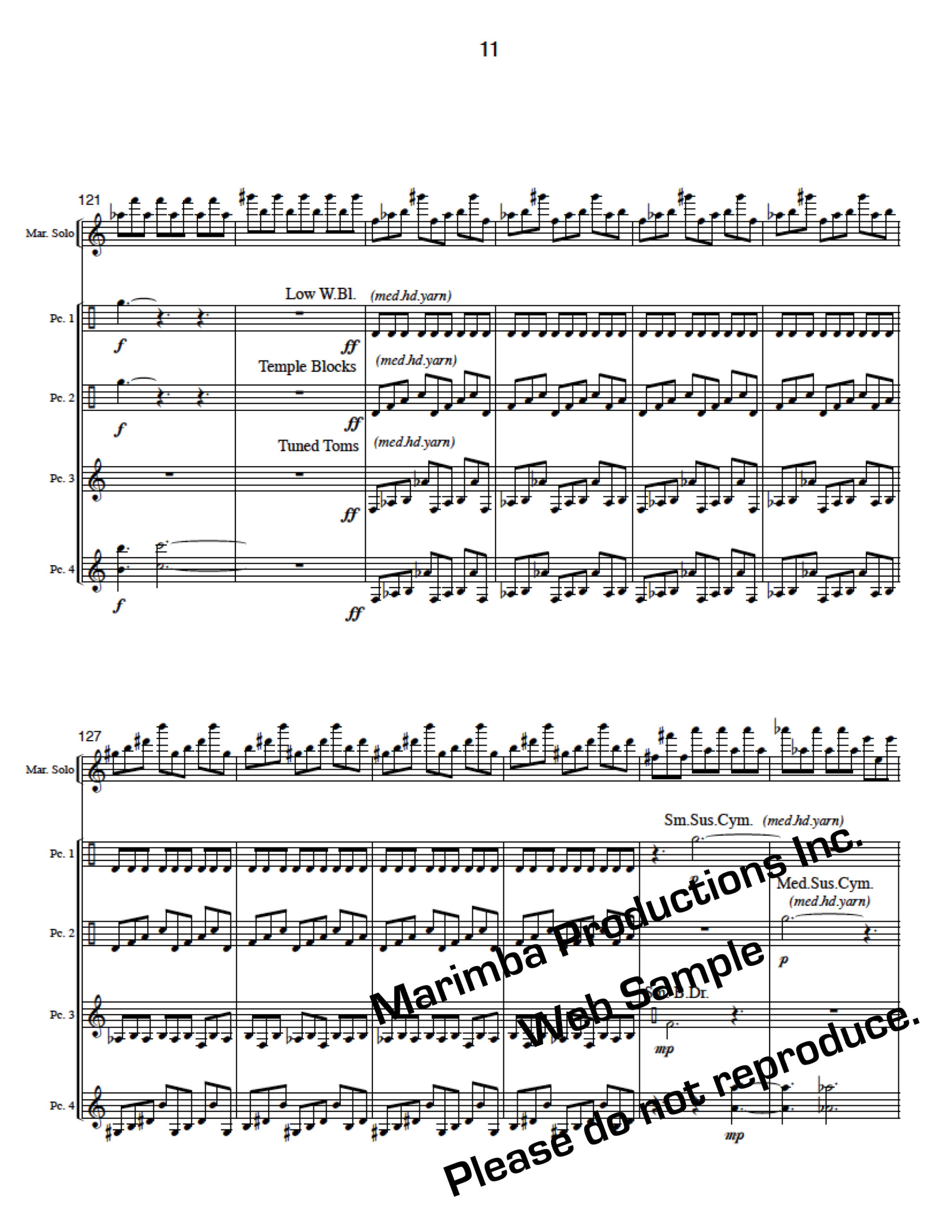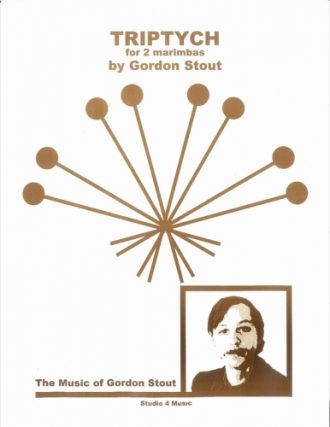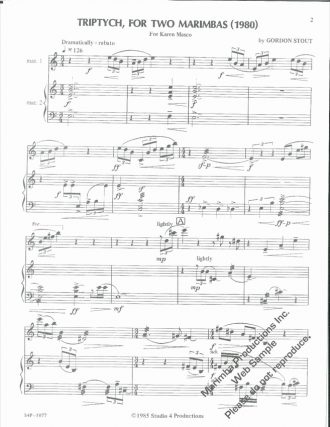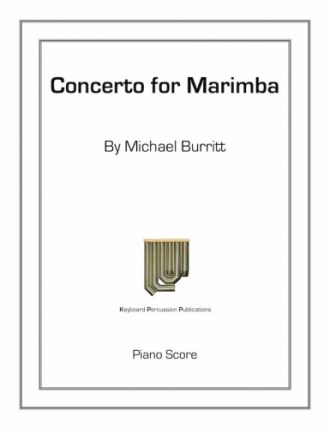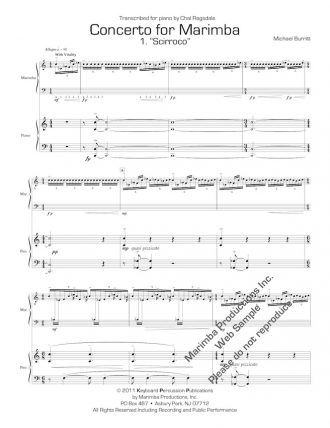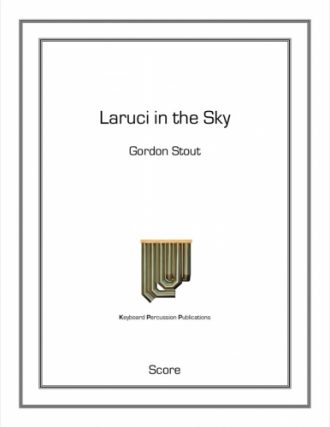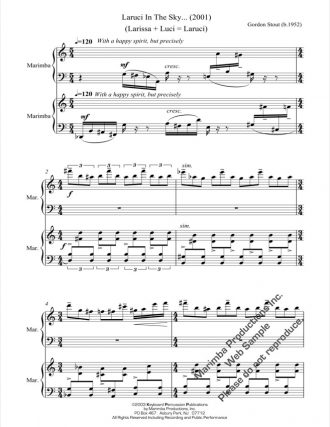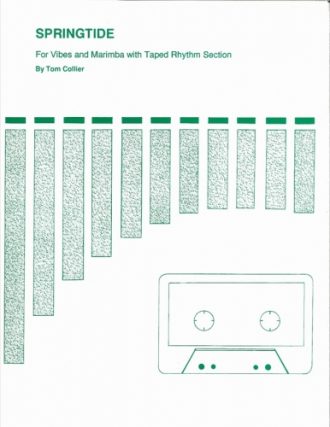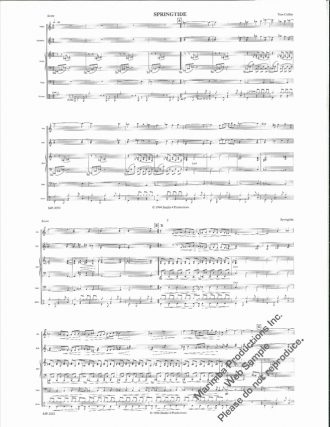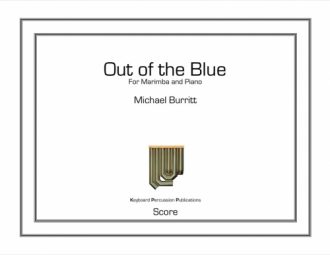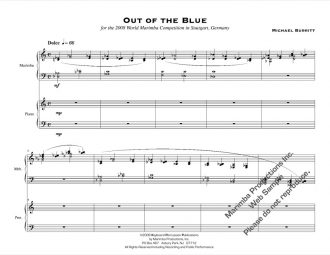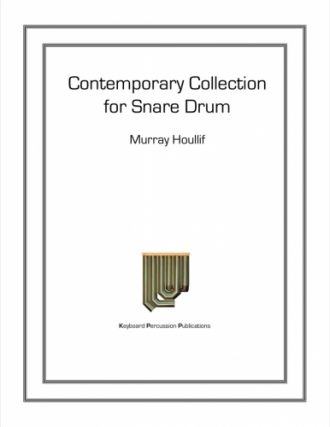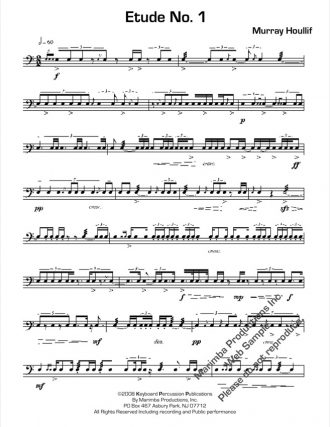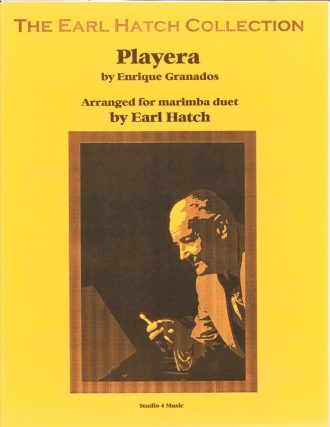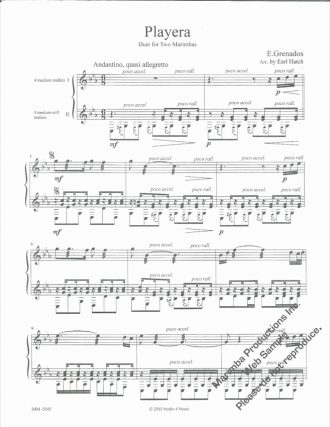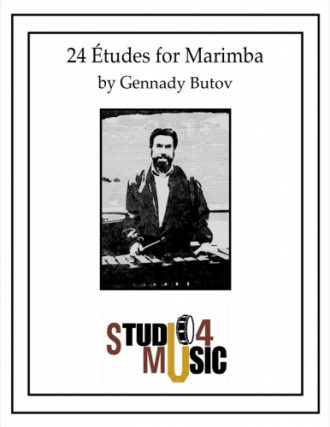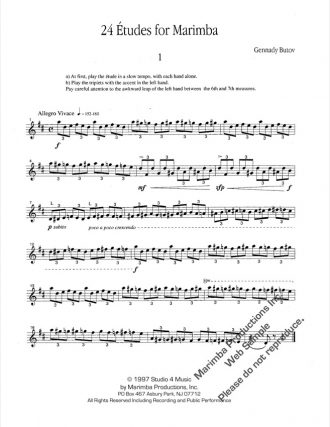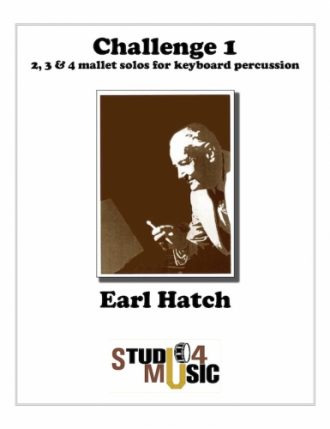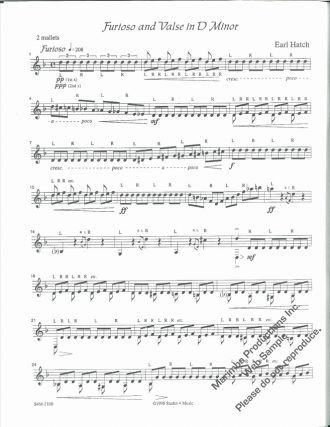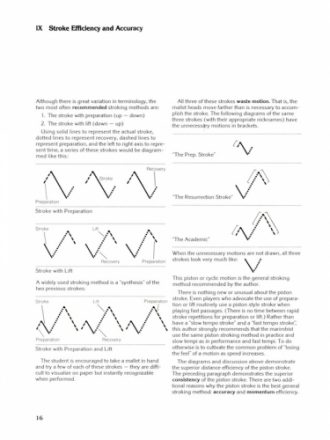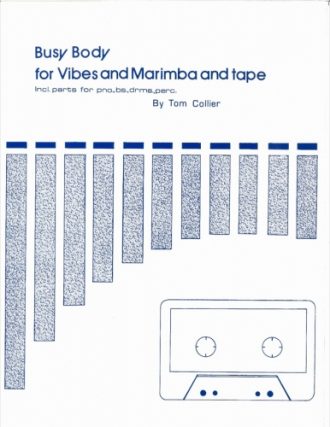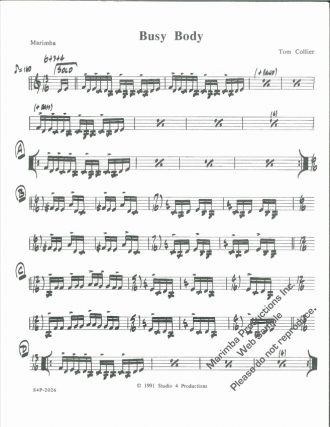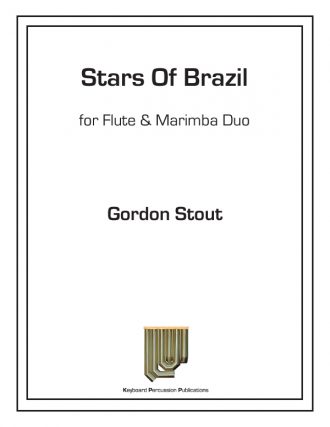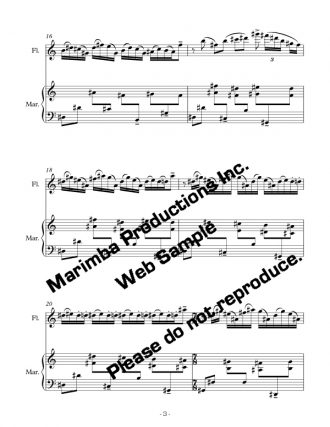Time Traveler was composed between December 1999 and February 2000 for Mika Yoshida to whom the composition is dedicated. A single-movement work was composed at the request of Ms. Yoshida for a premier performance with the University of Toronto Percussion Ensemble in April 2000. The work is scored for marimba soloist – who also plays a west African squeeze-drum called a “donno” – and an ensemble of four percussionists, performing on bongos, tamborim (small Brazilian hand drum), wood block, two suspended cymbals, snare drum, four temple block, gankogui (west African double-bell), bass drum, four tuned tom toms, tam tam, a vibraphone, and chang-chiki (Japanese metal block).
The composition is constructed around three principal elements: 1) a two-bar rhythmic pattern which hides the 3-beat, 9/8 time signature – the pattern is roughly equivalent to the double-bell (gankogui) patterns common to Ghanian drum ensemble music; 2) solo and ensemble combinations of short, cyclic phrase-patterns which further distory the sense of 3-beat time; and 3) melodic lines which are presented by the soloist and enhanced by the vibraphone.
The title comes from a merging of ideas about time, and about the many trips taken by Ms. Yoshida between Toronto, the home of NEXUS, and her native island of Kyushu in Japan. The word “time” carries with it a double-entendre as used by musicians; it refers to not only the passing of the seconds, minutes, and hours, but also to the musician’s sense of rhythm and beat. “Time zones” exist in the world to account for the different positions of locations on the earth relative to sunlight. Time zones exist in music to account for the varying concepts of rhythm and beat that are derived from differing musical cultures. Travel between music time zones may produce a sense of disorientation in the music analogous to that which is experienced by the jet plane traveler. However, it has been said that travel is the best teacher.

